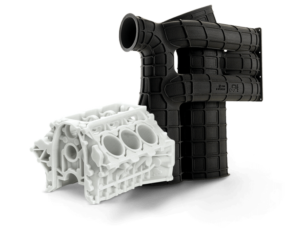Multi-cavity vs. single-cavity molds- Comprehensive information about their differences
Today, several plastic part manufacturers prefer the injection molding process for affordable mass production of different parts. Injection molding helps you create parts of the desired shape. CNC machining, die casting, and urethane casting are some alternatives. Still, injection molding is better than these manufacturing techniques. However, how do you choose between single-cavity and multi-cavity molds in your injection molding project? Let us now discuss the topic- Multi-cavity vs. single-cavity molds.
Although both multi-cavity and single-cavity injection molding processes involve the same series of actions, they are often used for fulfilling unique demands. That is why they are not very interchangeable. You need to learn the use cases, benefits, and constraints.
A brief overview of injection molding
The injection molding process starts with mold creation. Mold is the complicated part of your custom injection molding process. Professionals fill the mold with molten plastics and create the right shape.
After creating the molds, molders go through a 6-step process for injection molding. This process can also be duplicated. The most important steps are-
- Clamp the clamshell-like parts of the molds together
- The injection helps in heating plastic and injecting the material into the mold.
- After slight cooling, plastic fills the mold and hardens.
- Finally, after opening the mold, the part is removed with ejector pins
Multi-cavity vs. single-cavity molds
Basically, a multi-cavity mold helps with the production of multiples of a particular component. A plastic injection mold with multiple cavities presents you with a mold base. However, faster manufacturing does not mean you will save costs.
Plastic injection molds are slightly different though they are intended for the same purpose. We should also refer to the family injection mold, which produces several components with a similar look and size.
One thing to be noted in the mold frame is that every component in the injection mold has properly sized gating. Gating refers to a line passing from the flow to your product. It is an important factor as the cycle periods should be stable for the best manufacturing output.
Let us now define single-cavity molds and multi-cavity molds.
Single-cavity plastic injection molds include a single hollow. You can use them for designing one item at a time. They are an affordable and efficient option for running operations with a low-volume order. You may also choose the single-cavity molds to design an oversized component.
Operators would be able to pay attention to every product and prevent problems like unfilled portions and air bubbles. The single-cavity molds are more cost-effective than multi-cavity molds.
On the contrary, multi-cavity molds for injection molding projects include multiple identical hollows. These molds enable operators to pour molds into hollows. They also help with the production of multiple products at a time. That is why lead times will be shorter in the case of multi-cavity injection molds for multiple batches of goods.
Which factors differentiate the type of cavity in injection molds?
Cycle time
How many items do you like to mold within a particular time frame? It helps in differentiating multi-cavity molds from single-cavity ones. If your product has a 1-minute cycle time, you cannot create millions of items every year with the injection molding method.
It is essential to evaluate the preventive techniques applied to the mold. If you need to create several items every year, you can rely on the multi-cavity mold (like 4 to 8-cavity molds).
Shot guarantee
The best manufacturers provide a short warranty for the new molds. It makes sure that the mold works for the shortest period. According to the tolerances, product design, and conditions, a single-cavity plastic injection mold ensures shot assurance.
What are the pros of multi-cavity molds?
Multi-cavity molds involve multiple cavities of a particular part. They can produce many parts for every injection molding cycle. Moreover, they are perfect for high-volume products. The biggest advantages of multi-cavity molds are
- Shorter lead times- Manufacturers can meet their quotas as they can deal with multiple parts per cycle.
- Scalability- It is not always easy to fulfill an order for several single-cavity molds. On the other hand, multi-cavity molds let you place a large order. Manufacturers will be able to accomplish the work on time.
- Affordable- With 4 cavities, the mold costs less than 4 individual molds.
- Low cost for every part- The machine times and labor times will be comparatively short for multi-cavity injection molds. Thus, the price rate for a single part will be low.
What are the pros of single-cavity molds?
- Low-cost mold manufacturing
- It is easier to manufacture and design the molds.
- Molding machine manufacturers will have better control over the process.
Multi-cavity vs. single-cavity molds- How do you make the right choice?
Market demands and time are the most important factors for deciding on multi-cavity and single-cavity molds. If you like to produce several similar components at a time, you can go for multi-cavity molds. Within the shortest period, you will get a large number of components. It is, of course, the major benefit of creating multiple cavities simultaneously.
But, multi-cavity molds cannot be the right choice for particular types of projects. These molds need higher costs when compared to single-cavity molds. Although it is good to invest in a multi-cavity injection mold to make many components, a single-cavity mold is a better option.
We have thoroughly discussed the topic- Multi-cavity vs. single-cavity molds. However, a perfect mold is a challenge. That is why you can rely on Quickparts to design the parts. It has a professional team to provide you with highly engineered parts. Submit your project with Quickparts for a quote on cost-effective molding services today.


